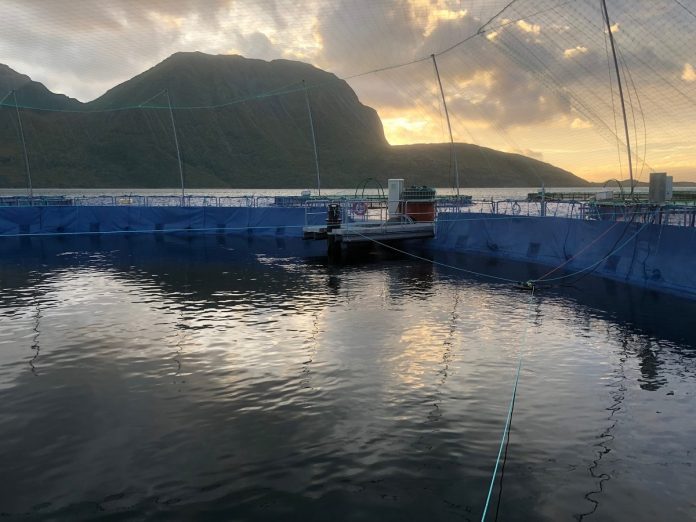Cermaq Canada testing new technology on the west coast of Vancouver Island, this autumn.
In a press release, the Mitsubishi-owned salmon farmer Cermaq Canada writes that a new semi-closed containment system (SCCS) is being assembled.
“The SCCS was trialed from seawater entry to one kilo gram in Norway with promising results,” wrote the salmon farmer.
This is the first step leading up to the planned stocking of the SCCS at its Millar Channel farm site, off the west coast of Vancouver Island in Clayoquot Sound, in the traditional territory of the Ahousaht First Nation, later this autumn. Assembly will take 8-10 weeks.
The system is scheduled to be stocked in November 2020, with harvest expected in the late spring or summer of 2022.
Cermaq Canada Managing Director David Kiemele explained that this is the first time the system – which was designed and built by FiiZK – is being used outside of Norway.
“This will essentially eliminate lateral contact between wild and farmed salmon, which has benefits to both populations. The system also allows for greater precision in farming by providing increased oversight of the environment inside the system by controlling water temperature, dissolved oxygen and preventing sea lice and algae from entering the system,” said Kiemele.
Semi-closed containment system facts
- The SCCS can be located at existing salmon farm sites, and uses a large, water-pressurized bag system which is made of a flexible polymer material that sits outside of the traditional netting system – creating an impenetrable barrier between the open ocean and the inside of the pen.
- Water is pumped into the salmon pen through four sea water intakes that are capable of pumping 300 cubic metres of water per minute, which allows for the creation of constant water circulation through the 12 deep-level ports.
- As the lining maintains constant water pressure and movement thanks to the intake pumps and the lower level ports, there is no risk of the bag “deflating”.
- The system can be customised to specific sites, based on depth, dissolved oxygen levels, and water temperatures.
- The system will be the first of its kind in Canada, but has shown promising results in Cermaq Norway where two trials of salmon, reaching up to one kilogram, have been conducted.
- Once pumped into the system through the screened intakes, water exchanges within the system in approximately 50 minutes.
- The tensile strength of the system is strong – at 1300/1300 daN/5cm – and can withstand storm activity and predator attacks.


